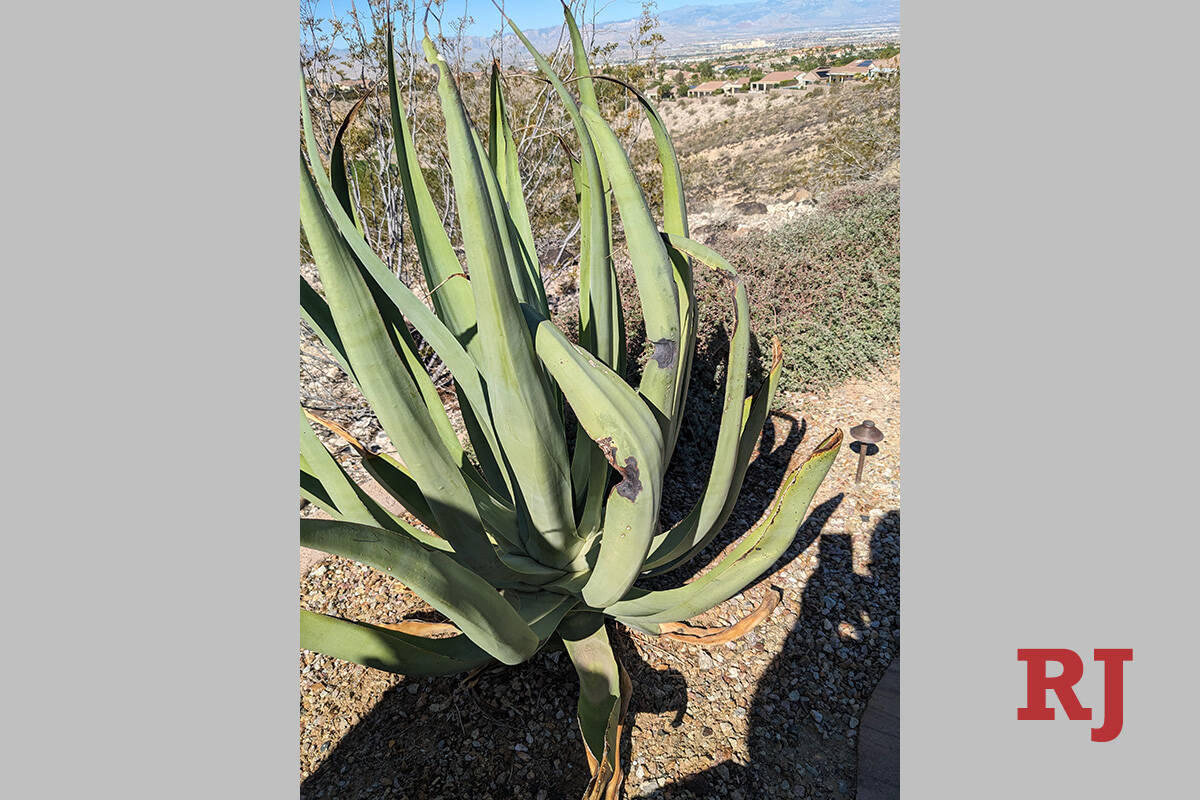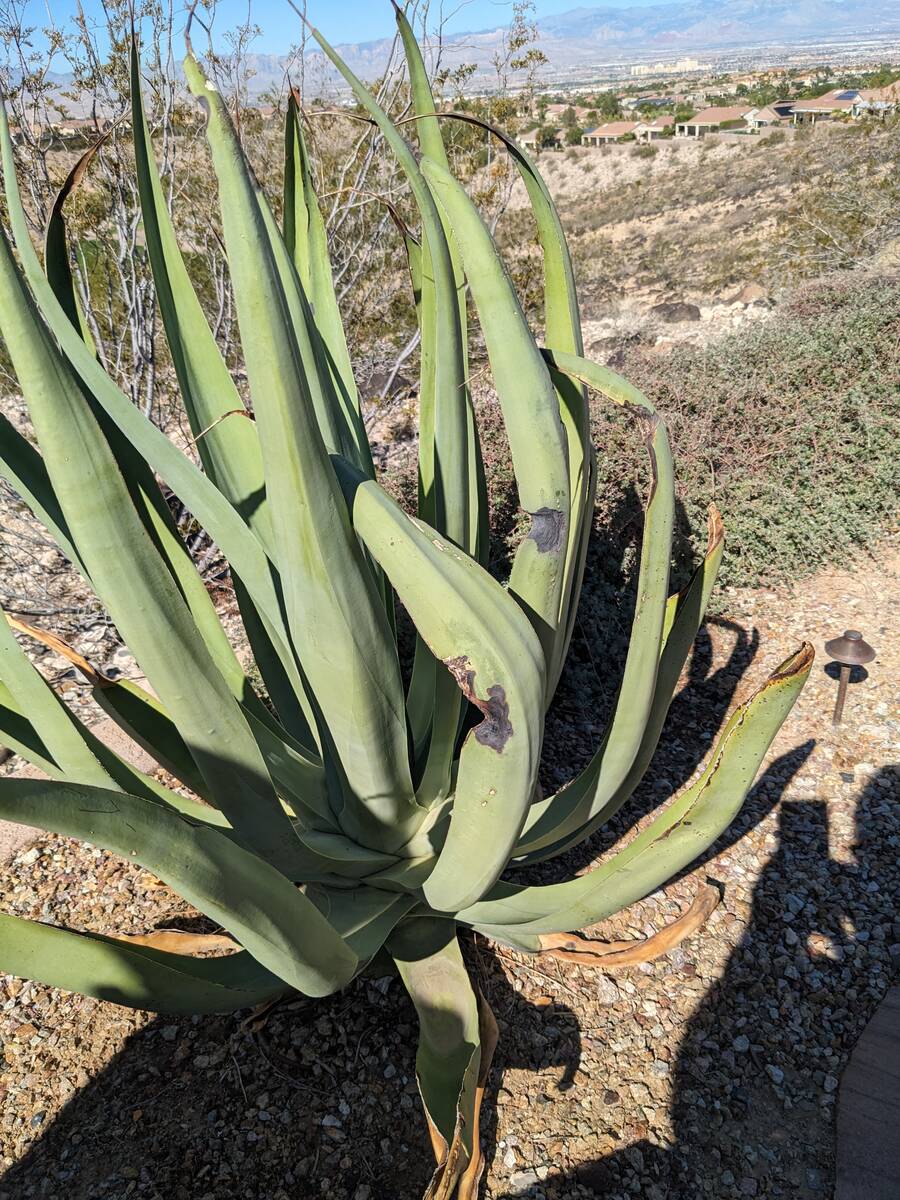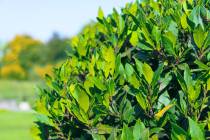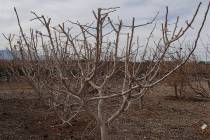Saving water in desert requires good irrigation design
Designing a landscape for energy conservation is quite simple. Just ask: “Which sides of the home are the hottest?”
Create shade on the walls and windows located on the hot sides of the house. Try not to use plants when you do this.
Creating shade that doesn’t use water requires more brainwork but may be necessary in the desert. Usually, a home’s hottest areas are the exposed south and west walls and windows.
If you don’t know which sides are hot, use a temperature gun (infrared laser for measuring temperature) during the hottest times of the day. You can buy an inexpensive but accurate gun for less than $25.
There is no need to shade the roof as it is usually better insulated than walls and, in particular, windows.
Selecting plants to save summer electrical costs is quite simple. Select winter deciduous plants so that the sun warms the house during those months.
If water is plentiful, how much water these plants use is unimportant; irrigation design is important. I can’t stress the importance of using hydrozones. The water use of xeric (desert) versus mesic (nondesert) plants depends on how frequently each is watered. Use plants that have water provided to them at the same time.
How deep plants are watered is adjustable. How frequently they are watered is not.
Xeric plants are not watered as often as mesic plants if you want to conserve water. This means plants are matched to their irrigation valve; xeric plants are put on one valve and mesic plants on a separate valve. This means you must know the difference between desert and arid plants.
Xeric will grow more rapidly than mesic plants if they are mixed on the same valve. Xeric plants are more adjustable in their growth rates if they are all watered at the same time, and you can adjust the frequency of watering.
When water is scarce, xeric plants tolerate dry soil better than mesic plants. They have capabilities of saving water through many different traits including leaf drop, changes in leaf and plant size, as well as changes to the plant at the genetic/molecular level.
Being from the desert, xeric plants have evolved to soil drought. Water xeric plants less often. This means watering them with a separate irrigation valve (hydrozones). Because of this, xeric plants can get by (and often benefit) when watered less frequently than mesic plants.
For instance, foothills palo verde (Parkinsonia microphylla or Cercidium microphyllum, depending on the source of its scientific name) is a true xeric-use plant. It grows in flat, dry areas throughout the Sonoran Desert of the U.S. Southwest. It can survive in dry soil for long periods of time. It can’t survive without any water, but it will require watering, deeply, less often.
When water is limited, xeric plant growth first begins to slow or stop. That can be hard to see. Controlling the plants’ size, controls their water use.
If dry soils continue, xeric plants start dropping their leaves. That is easier to see. Fewer leaves mean there are fewer leaves present to lose water.
If the canopy begins thinning out, it’s time to water. If the soil remains dry, then leaves begin scorching and branches begin dying. In the case of cactuses, their stems may begin to shrivel. You don’t want limb dieback, or cactus shriveling, in a landscape.
On the flip side, they may not look the best when that dry spell is over, but at least they have survived. In a landscape, deeply watering these plants once every four to eight weeks is usually enough. Observing xeric plants regularly (once a week in the summer) will tell you if it’s time to water or hold off.
Branch dieback in palo verde and other trees (mostly mesic) can be confused with the palo verde root borer. Occasionally a single, isolated branch will begin dying back to the trunk during the summer if these insects have been feeding on the roots.
In cases like these, a systemic insecticide for borers might be the only solution available. As with other plants, apply this insecticide only after flowering to avoid the risk of hurting pollinators like honeybees.
How much water is applied is controlled by the size of the emitters (2-, 3-, 4- or 5-gallon drip emitters) or a moat surrounding trees and shrubs. For 10- to 12-foot-tall trees, flat moats about 6 feet in diameter and 2 to 3 inches tall will work.
Figure that in most level soils, 1 inch of water will wet roots about 15 to 18 inches deep. My experience tells me that at least half the area under the tree’s canopy should receive this water. Once the roots of a tree are watered deeply enough, the only changes that need to be made to an irrigation timer are seasonal.
If you try to grow deep-rooted, xeric trees in a fescue lawn, the tree frequently dies or “wiggles” in the soil. If it is watered every day, the tree may have a fungal disease called root rot.
Xeric trees don’t need daily watering, like a lawn, in the summer. It’s watered every day because fescue lawns need it, not because the trees need it. True xeric plants are very susceptible to root or collar rot.
Not true of Chinese pistache or bottle trees. We don’t know how much water these trees use, but both trees are mesic in their water needs, not xeric. This means they can survive dry soil very well. However, both bottle trees and Chinese pistache will do OK in lawns because they are used to handling more-frequent watering. Their roots will grow shallower because of the lawn, but they will survive.
If you want to control the other water applied to your landscape (or about 70 percent of the water used), then take control of the irrigation timer. Once control is gained of the irrigation timer, the next steps are easier.
Q: Is there something we need to do for spots on the leaves of my octopus agave?
A: I think this is a fungal disease that favors a higher humidity than we normally have in the desert. The disease was caused and spread by the rain and wind that we had earlier.
You don’t want any fungal disease spreading to the mainstem. To prevent that, you can apply a common landscape fungicide to the cactus after you have a repeat of the rain-and-wind event. Watch your weather app. If your weather app says the rain is returning, apply the landscape fungicide the day after it occurs.
In the meantime, prune out any black spots or lesions you see in the stems. I think these are fungal lesions with dormant fungi waiting for the next rain event to make it active again.
Sanitize between any cuts to eliminate reinfecting the plant. Use 70 percent ethyl alcohol to sanitize a knife or pruning shears. Using both the fungicide after wet weather and cutting out the black spots helps eliminate future problems.
Make sure you’re not overwatering it and improve soil drainage around its roots. Octopus agave originates in the Sonoran Desert of Mexico, therefore, it doesn’t like getting watered too often. Take it off the irrigation controller and hand water with a hose.
Watering these plants once with a hose only gets the water 3 or 4 inches deep. Water these plants five times a year: only three or four times during the summer and once in the winter. The soil must be dry between waterings.
Q: Is it too early to fertilize my oleanders, lantana, rosemary and chase tree?
A: You can fertilize now and skip the spring application. Woody plants will store nitrogen fertilizer until spring.
The only plants you want to skip are the so-called winter-tender plants you don’t list. Those are the plants that are sensitive to winter cold damage. You don’t want to stimulate new growth that could be damaged by winter cold.
Skip fall soil applications of iron fertilizers to correct any yellowing until early spring. Plants will respond to soil-applied iron fertilizers best in the early spring. Fall applications are best sprayed on the leaves.
Bob Morris is a horticulture expert and professor emeritus of the University of Nevada, Las Vegas. Visit his blog at xtremehorticulture.blogspot.com. Send questions to Extremehort@aol.com.






























